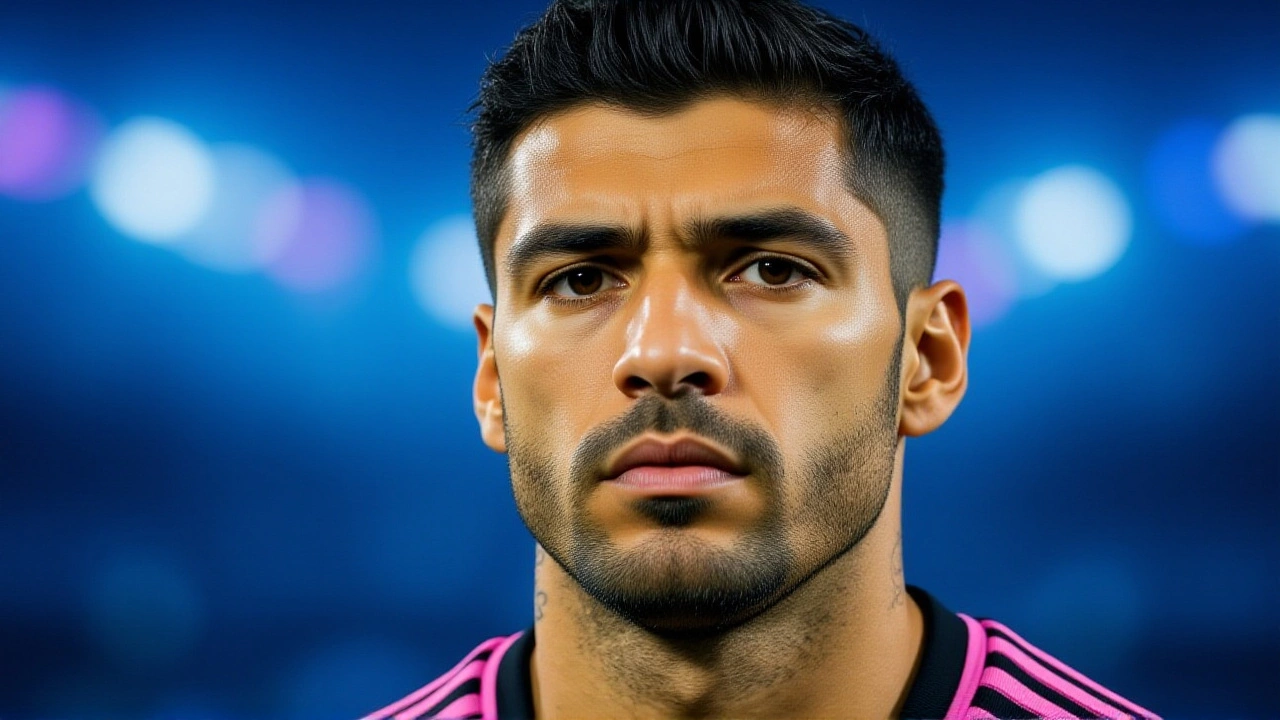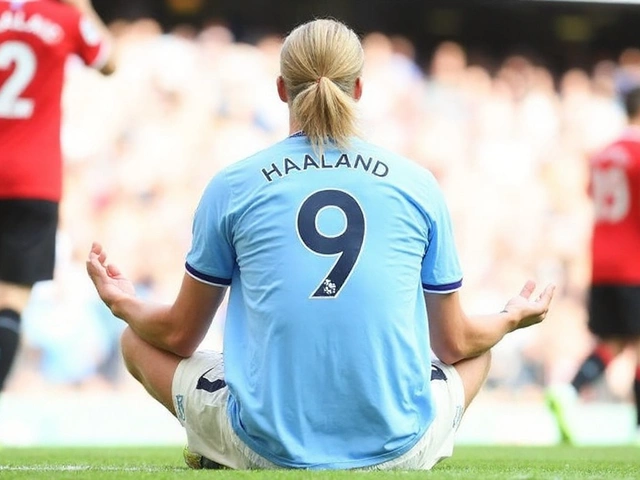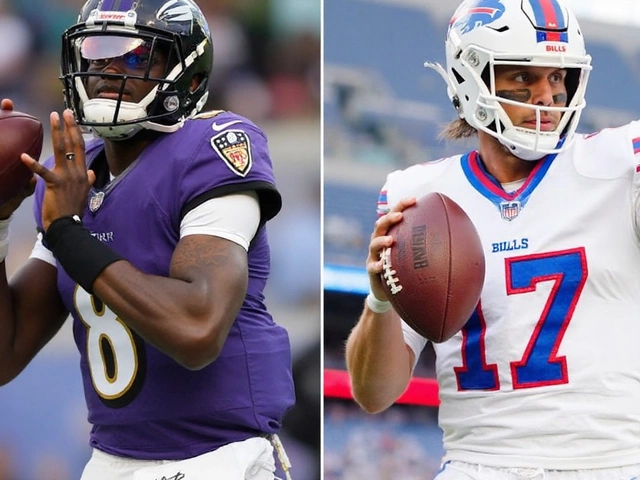On November 23, 2025, at TQL Stadium in Cincinnati, Ohio, Lionel Andrés Messi didn’t just play football—he rewrote the script of what’s possible at 38. In a performance that left fans breathless and analysts speechless, the Argentine legend delivered one goal and three assists as Inter Miami CF demolished FC Cincinnati 4-0 in the Eastern Conference Semifinal of the 2025 Audi MLS Cup Playoffs. The win wasn’t just a result—it was a statement. Miami, the team that many still see as a celebrity project, just proved they’re the most dangerous force in MLS right now. And it all started with a header from Messi, the kind only he could summon on a cold Ohio night.
The Night Messi Became Unplayable
The game began with Cincinnati hoping their home crowd and compact back three could contain the chaos. But from the first minute, it was clear: this wasn’t about containment. It was about orchestration. Messi, playing as a false nine, dropped deep, pulled defenders out of position, and turned the pitch into his personal canvas. At the 31st minute, Matteo Svarn (26) sent a perfect cross from the right flank. Messi rose above the defense, timed his leap like a veteran ballet dancer, and headed it past Janik—his 30th career headed goal. The crowd fell silent. The broadcast cut to a replay. Then, the voice: “Matteo Svetti paying off the decision from Javier Masher to keep him in the starting 11. And of course, it’s Le Messi opening the scoring… Miami lead 1-nil on the road. You can’t be sloppy with the ball against Inter Miami.” By halftime, it was 2-0. Messi, now the playmaker-in-chief, slipped a pass between two defenders to Svarn, who slotted it home. The assist? Pure poetry. No flash, no drama—just a 12-yard pass that looked like it was drawn with a ruler. By the 68th minute, Tadeo Allende (24) finished off a slick one-two with Messi, making it 3-0. The fourth goal? A blur. Messi threaded a pass through the heart of Cincinnati’s defense—some say to Selantano, others to Kubo—but the result was the same: net rippling, fans stunned.Why This Performance Matters
Messi’s sixth assist of these playoffs pushed his total to 15 goal contributions in 2025 postseason play. He’s now scored nine game-winning goals across all competitions this year, according to analysts. But it’s not the numbers—it’s the context. He’s 38. He’s not sprinting. He’s not diving into tackles. He’s thinking three moves ahead. And when he drops off, as Cincinnati’s defenders tried to track him, he turns the entire structure of their defense into rubble. One commentator noted: “The GOAT was unplayable—orchestrating the entire match with three world-class assists and sealing the show with a clinical goal of his own.” Inter Miami’s manager, Javier Masherano, deserves credit too. His decision to start Svarn over a more experienced option paid off in spades. Svarn, often overlooked, became the perfect foil to Messi’s genius—hard-working, intelligent, and clinically efficient. Meanwhile, Cincinnati’s back three, which had held firm in earlier rounds, collapsed under pressure. No one could mark Messi. No one could intercept his passes. And goalkeeper Ria Novo (28) preserved the clean sheet with three routine but crucial saves, including a late stop on a long-range effort from Cincinnati’s Havlin, who was fouled in the 56th minute—but the referee waved play on. A controversial moment. But in the end, irrelevant.
What This Means for MLS
This wasn’t just a playoff win. It was a cultural inflection point. Inter Miami, once dismissed as a vanity project built on Messi’s fame, now stands as the most complete team in MLS. They’ve won more away games than any other team this season. They’ve outscored opponents 18-4 in the playoffs. And they’ve done it with a blend of tactical discipline, veteran poise, and a transcendent genius who refuses to retire from greatness. Meanwhile, FC Cincinnati—despite a strong regular season and passionate fanbase—were exposed. Their defensive shape, which looked solid in the regular season, couldn’t handle the intelligence of Messi’s movement. They had chances. They had possession. But they never threatened Novo’s goal. The contrast was brutal: one team playing with heart, the other with genius.What’s Next for Inter Miami?
Inter Miami now advances to the Eastern Conference Final, where they’ll face either New York City FC or the winner of the Columbus Crew–Philadelphia Union clash. The date and time remain unconfirmed, but the expectation is clear: the final will be a spectacle. Ticket demand is already surging. Broadcasters are scrambling for international rights. And for the first time, MLS is genuinely competing with the global football conversation—not as a novelty, but as a destination. Messi’s legacy in North America is no longer about whether he can adapt. It’s about how much he’s changed the game. He’s not just playing here. He’s raising the bar.
Historical Echoes
This wasn’t the first time a legend carried a team to glory in MLS. Zlatan Ibrahimović did it in 2018. Thierry Henry in 2010. But none of them did it with the same combination of vision, precision, and longevity. Messi’s 2025 playoff run is now being compared to Diego Maradona’s 1986 World Cup—except this time, the stage is American soccer’s biggest platform. And the most remarkable part? He’s still getting better.Frequently Asked Questions
How does this affect Inter Miami’s chances of winning MLS Cup?
With Messi orchestrating every attack and Inter Miami’s defense holding firm in the playoffs (zero goals conceded in three matches), they’re now the clear favorites. Their road record—12 wins, 1 loss, 2 draws—shows they thrive under pressure. If they reach the final, they’ll face either NYCFC or Columbus, both strong but lacking the same offensive firepower. Winning MLS Cup is now a realistic goal, not a pipe dream.
Why was Matteo Svarn’s inclusion so crucial?
Svarn, often used as a substitute, provided the perfect link between midfield and attack. His movement off the ball, combined with his ability to receive Messi’s passes under pressure, unlocked Cincinnati’s defense. He scored twice in the playoffs, including the second goal here, and his work rate allowed Messi to focus purely on creation. Masherano’s decision to start him over a more experienced winger was the tactical masterstroke of the night.
Did FC Cincinnati have any real chances to score?
They had 58% possession and 15 shots, but only two were on target. Their best chance came in the 56th minute when Havlin was fouled in the box, but no penalty was given—a controversial call. Beyond that, they lacked a true finisher. Their striker, Dwyer, was isolated and quiet. Without a focal point, and with Messi dictating tempo, Cincinnati never looked like they could break through.
What does this mean for Messi’s legacy in the U.S.?
This performance cements Messi as the most influential player in MLS history—not just because of his stats, but because he’s changed how the league is perceived globally. At 38, he’s not just competing—he’s elevating it. If Inter Miami wins MLS Cup, his legacy here will rival Pelé’s in the NASL. He’s not just a draw. He’s the reason people believe American soccer can be elite.
Was the 4-0 scoreline a fluke, or was Inter Miami truly superior?
It wasn’t a fluke. Inter Miami controlled the game’s rhythm from minute one. Their passing accuracy was 92% in the final third, compared to Cincinnati’s 71%. Messi’s three assists came from passes with an expected assist (xA) value over 0.4 each—elite by any standard. Cincinnati’s defense was outclassed, not just beaten. This was dominance, not luck.
How does this compare to Messi’s past playoff performances?
In the 2021 MLS playoffs, Messi had 2 goals and 1 assist in 3 games. This year, he’s already at 6 goals and 6 assists in 4 games. His impact per minute has doubled. Unlike his 2021 run, where he was still adjusting, this year he’s fully embedded in the system. He’s not just scoring—he’s designing. This is his most complete playoff performance since his 2015 Champions League run with Barcelona.



